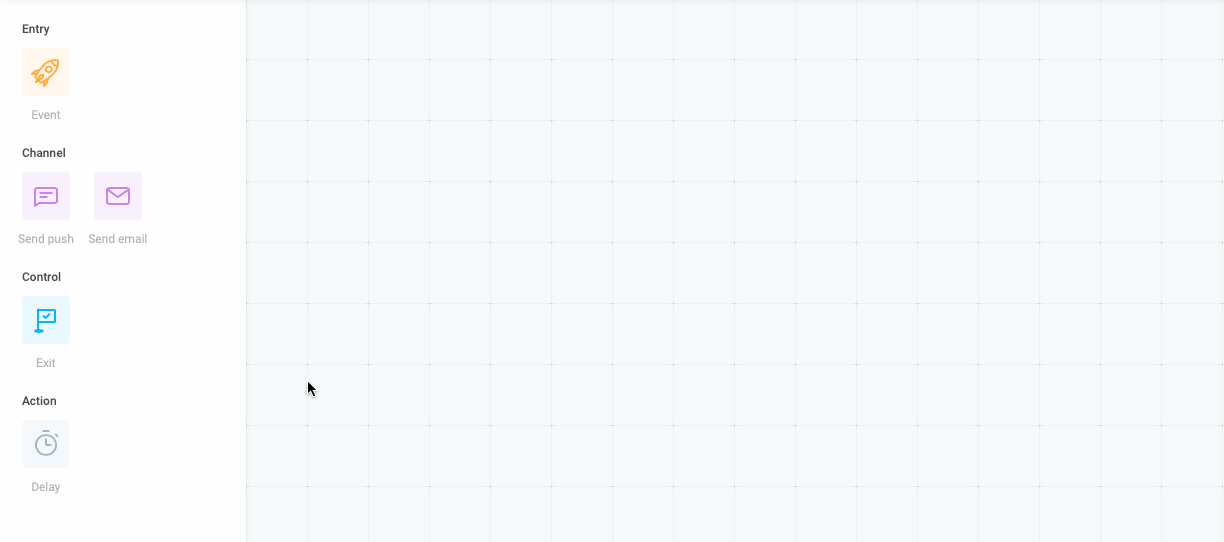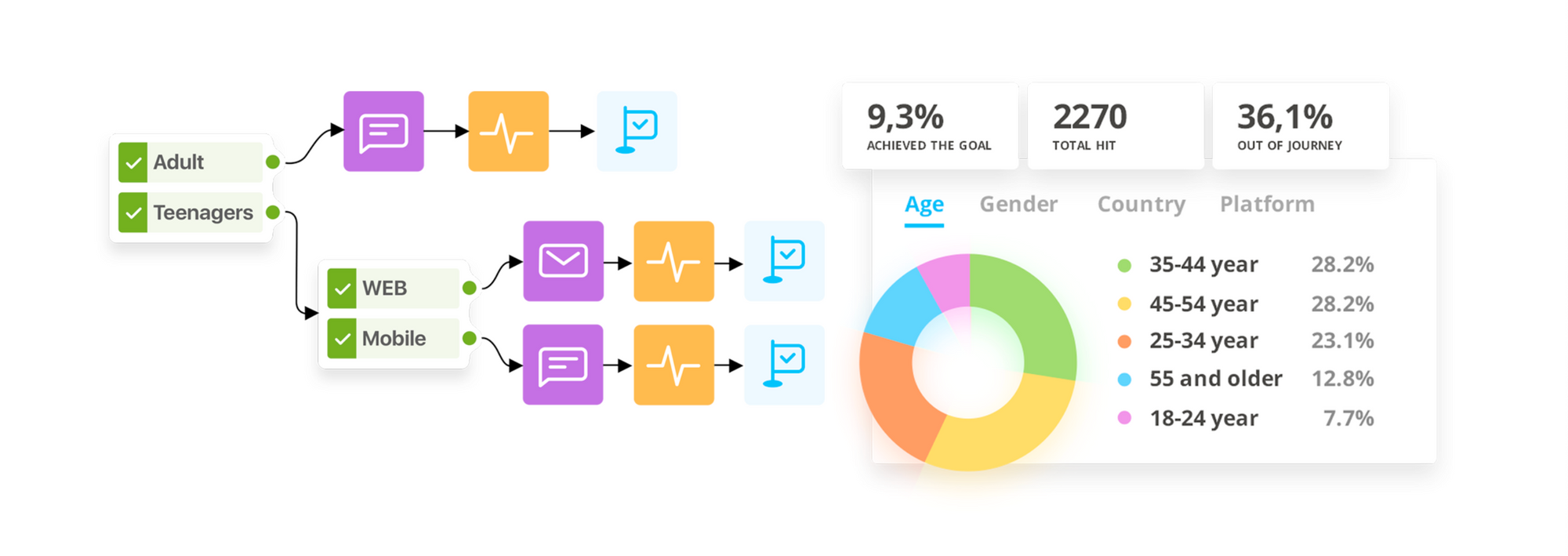When building event-based messaging, it's important to define the right user actions that can become starting points for your communications. Here are some tips on how to approach this.
Mobile app analytics is usually built on events. Events are typically tracked by an analytics system, which also provides an interface for working with the collected data. However, events are useful not only for analytics, but also for launching effective marketing campaigns that are based on user behavior and aligned with every customer's experience.
Behavior-based communications mean your messages are always delivered to the right users at high-impact moments, which brings the best results and more conversions.
An Event is any action a user performs in the application / on the website (clicking on a button, opening a specific screen, adding a comment, spending or buying an internal currency). When an action is performed, the application sends an event to the analytics server.
Along with events, a number of required parameters (event attributes) are usually recorded and transferred (such as user id, application version, device model, other utility parameters), as well as a number of additional custom parameters that you define yourself (for example, the number of days from the moment you started using the application, the number of application launches etc).
Configuring Event-Tracking for Mobile Applications
Step 1. What do we need to know?
First, you need to decide what goals you are pursuing, and what communications you can tie to a user's actions that will help you reach these goals. To do that, just imagine the application is already running, and it's time to start communication with the users. What and when do you think they need to see/read in order to move closer to the action you want them to perform?
To define those moments, we recommend using the following approach: write down the main scenarios for using your application, and then imagine how the user goes through them, ask questions that your customers might get and what answers will guide them closer to conversions.
This is especially good for onboarding, because new users always need your assistance the most, and there are many moments when your tips may come in handy. By helping them avoid confusion, you increase the chances of them coming back. Imagine their first experience and you'll get the idea of when and what messages you should deliver.
Here are some questions you might want to ask yourself:
- What are the users' first steps in the app?
- What should they do first and how to help them do it?
- At what point might they start considering their first purchase?
- What action means they have successfully adopted your app?
- What actions can mean they are having difficulties using your app or understanding the value of your product?
- What actions mean they are close to buying something from you?
After compiling a list of questions, it makes sense to ask other team members about what key actions they can come up with, and what's important from their perspective.
Step 2. What attributes are required in order to make communications even more relevant?
Now that you have an understanding of what user actions you need to track, it's important to define the attributes that will make your messages more personalized.
Example of an event without attribute: Product Add (a user has added something to their cart, but forgot to buy it).
Your message: Jane, you forgot a product in your cart! Don't worry, we saved it for you! ;)
Example of an event with attribute: Product Add, category: shoes (a user has added shoes to their cart, but forgot to buy them).
Your message: Jane, the shoes you left in your cart are waiting for you! Get them now!
As you can see, event attributes help you speak to your customers on a more personal level, make your communications much more engaging, which boosts conversions.
Step 3. What user actions (Events) will help me estimate the efficiency of my campaigns?
Define what events are the final goals that will mean your communication is successful. These events will serve as an indication that your marketing strategy works. If your users don't perform your goal events, it means you should re-evaluate the sequences of messages you're currently sending to your users as a response to certain actions.
Step 4. Set up automated sequences of messages launched by events

Now that you have a list of events and you know what messages you should send once it occurs, just build the message sequence on a canvas, using Customer Journey. It's an easy-to-use drag-and-drop tool that allows marketers to design and launch cross-channel communications that assist customers at every stage of their lifecycle.
Here's an example of how you can set up a cart recovery sequence:

Step 5. Keep an eye on statistics
Once you've launched the sequence, it's important to keep an eye on numbers: how many customers successfully complete the journey, performing the goal action, how many users open your messages, how many ignore them and stop at certain points. It helps improve your messages and make them more effective.


Request a free demo and find out how you can set up automated event-based messaging to boost your revenue:

